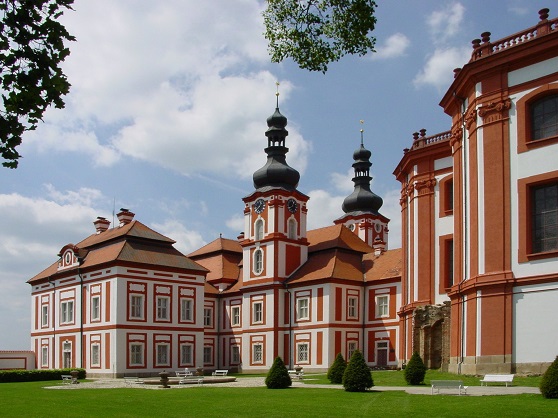
The Baroque complex of Mariánská Týnice will finally be completed according to Santini after three centuries
 |
Mariánský Týnec - The dominant feature of northern Plzeň, the monumental Baroque complex of Mariánská Týnice, will see the completion of part of the area according to the original, never-completed design of builder Jan Blažej Santini after three centuries. The Plzeň region and its Museum and Gallery of Northern Plzeň in Mariánská Týnice, which is located in the former provost's building, succeeded in applying for a grant from the Integrated Operational Program (IROP). Alena Svobodová, head of the cultural and heritage care department of the regional office, told ČTK. Thanks to this, the previously missing eastern cloister and two chapels will be completed.
"The completion is very unique in that no one has yet had the courage to complete something that was designed in the Baroque style on such a complex heritage site," said Svobodová. According to her, something similar has not yet been achieved in Europe. "It was very complicated negotiations with heritage protectors and with the professional public, as well as the question of whether to go ahead with it at all," she added.
The completion of the cloister will close the complex, which is desirable for both aesthetic and safety reasons. Moreover, it will finalize Santini's original plans, and Mariánská Týnice could become one of the most visited pilgrimage sites in the Czech Republic, Svobodová said.
The region is expected to receive around 50 million crowns for the completion of the eastern cloister, with the remaining part of the costs covered from its own budget. The exact budget is not yet known. "We need to create implementation documentation and a public tender. That competition will be large and will take at least half a year. We will start working on it in the summer. It will also be a very prestigious contract for the companies," Svobodová is convinced. The precise parameters, materials, and technologies for the completion must be specified in the implementation documentation. According to Svobodová, the aim is not to replicate the Baroque technologies down to every detail. "We will not pretend that this was built at the end of the 18th century; we will acknowledge that, but we will honor Santini's architecture. No concrete will be poured anywhere. Everything will be assembled as it was technologically done in the Baroque period," she said.
Santini's original plans included that the entire complex would consist of four parts - a church, the provost's building, and two cloisters. However, the eastern cloister was only started, leaving behind the ruins of two chapels. The cloisters were intended for pilgrims to hide and confess there. Outside of pilgrimage times, the cloisters served as a meditation garden for the monks, museum director Irena Bukačová previously told ČTK. According to her, the site has the advantage of having been preserved in its original concept, with no later additions. The museum already completed one chapel a few years ago.
The region submitted four applications in the culture section of IROP, all of which were successful, added Svobodová. In addition to the unique completion of the Baroque monument, the region is also expected to receive grants for the complete reconstruction of the national cultural monument of the water hammer in Dobřív in the Rokycany area, for the restoration of Loos's interior in Plzeň, and for the establishment of a paleocenter of European significance in Rokycany.
The English translation is powered by AI tool. Switch to Czech to view the original text source.
0 comments
add comment
Related articles
7
02.02.2021 | The Pilsen Region has completed the construction of the Baroque ambulatory in Mariánské Týnice for 60 million
0
26.03.2017 | In Mariánská Týnice, the ambitus will be completed according to the original plans
0
05.06.2016 | The Marian monument in Týnice wants to complete the cloister according to Santini's vision
0
19.03.2014 | Mariánská Týnice will showcase Santini's buildings, models, and visualizations
0
09.08.2011 | The Mariánská Týnice in Plzeň will have a chapel built according to Santini












